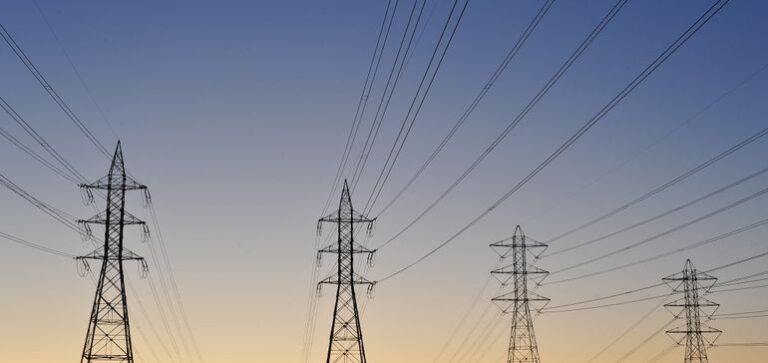
This opinion piece is part of a series from Energy Innovation’s policy experts on advancing an affordable, resilient and clean energy system. It was written by Eric Gimon, senior fellow, and Mike O’Boyle, electricity director.
Despite some close calls, the United States did not experience major power shortages during this record-hot summer. While resource adequacy challenges were forecast across the country, grid managers and new clean energy resources maintained power despite record demand.
Managing these risks illustrates how utilities can transition away from fossil fuels to low-cost weather-dependent resources like wind and solar, along with energy-limited capacity like storage, efficiency and demand shifting.
The Midcontinent Independent System Operator, Electric Reliability Council of Texas and California Independent System Operator are all leading national renewable energy deployment, and all faced high resource adequacy risks this summer. But they kept the lights on with help from battery storage, demand-side innovation, neighbors, and a bit of luck.
Examining what happened in each market can help grid operators, utilities and regulators improve reliability and avoid resource adequacy challenges without disrupting the economic transition to low-carbon resources. Improving demand forecasting, increasing battery storage for resource adequacy, expanding smart demand response programs, and deepening coordination with neighbors can prevent outages that frustrate or harm customers.
Hot summer predictions come true
The North American Reliability Corporation’s annual Summer Reliability Assessment evaluates “generation resource and transmission system adequacy and energy sufficiency to meet projected summer peak demands and operating reserves.” The 2022 edition predicted Central and Western U.S. states faced elevated summer reliability risks from extreme temperatures, drought conditions affecting hydro output, and higher peak demand. The same report also highlighted supply chain concerns and potential wildfires as additional threats.

These projections were generally spot on. As of Oct. 11, 46.43% of the U.S. is in drought — mostly in the West and Great Plains. July through September 2022 was the warmest on record in most Western States, and temperatures were well above average in the MISO region, Texas and across the West. This combination drove several near misses in the “riskier” areas of MISO, ERCOT and CAISO. But even so, grid operators weathered the extreme conditions.
Windy MISO beat the heat — but may not next time
NERC cautioned that MISO could fail to meet even a “normal” peak demand event due to increasing demand, a lack of new peak-coincident generation, and retiring plants (mostly coal). At the same time, the region is a leader in wind integration, with 13% wind generation in 2021.

NERC projected MISO would have 122.1 GW of capacity available after typical outages during its anticipated 118.2 GW peak demand, which could reach 125.2 GW with extreme heat. However, its summer peak on June 21 was 116.4 GW, well within this margin.
MISO had options, sitting in the middle of the Eastern Interconnection with substantial transmission to neighboring regions and a wide footprint to draw from, especially in MISO North. Although extreme Midwestern heat could have significantly stressed the grid, MISO avoided extreme heat that would drive record peaks. This reprieve gave MISO another year to add capacity in anticipation of hotter temperatures and greater demand going forward.
Without help from neighbors, low wind and high demand are top threats for Texas
ERCOT is another national wind integration leader, with 24% of its energy coming from wind and 4% from solar in 2021. NERC forecasted ERCOT’s “normal peak” would reach 74.5 GW and anticipated it would have 77.4 GW on hand at that time, even in a “low wind” event, showing how extreme summer demand could push the grid closer to the margin. Because it is mostly isolated from other grids, the Texas grid can’t meaningfully depend on its neighbors.

ERCOT hit a new record for peak demand of 80 GW on July 20, but had adequate resources that day. In fact, ERCOT’s top 10 peak demand events took place this year, showing just how much demand has grown year over year in Texas. Still, the grid handled it all — but not without a few close calls.

ERCOT had its nearest miss on July 13 when peak load reached 78.4 GW, but wind and solar were at 13.3 GW or just 72% of expected peak capacity. Meanwhile, 6.5 GW of thermal outages occurred, when typical unplanned outages are usually around 4 GW.
ERCOT’s operating reserves dipped below acceptable levels, prompting deployment of emergency responsive services. ERCOT allows customers to sign up for real-time rates, so high prices played some role in reducing demand. The reserve shortage demonstrates how coinciding high demand and low renewable output will be ERCOT’s main stressor, not necessarily overall peak demand.
